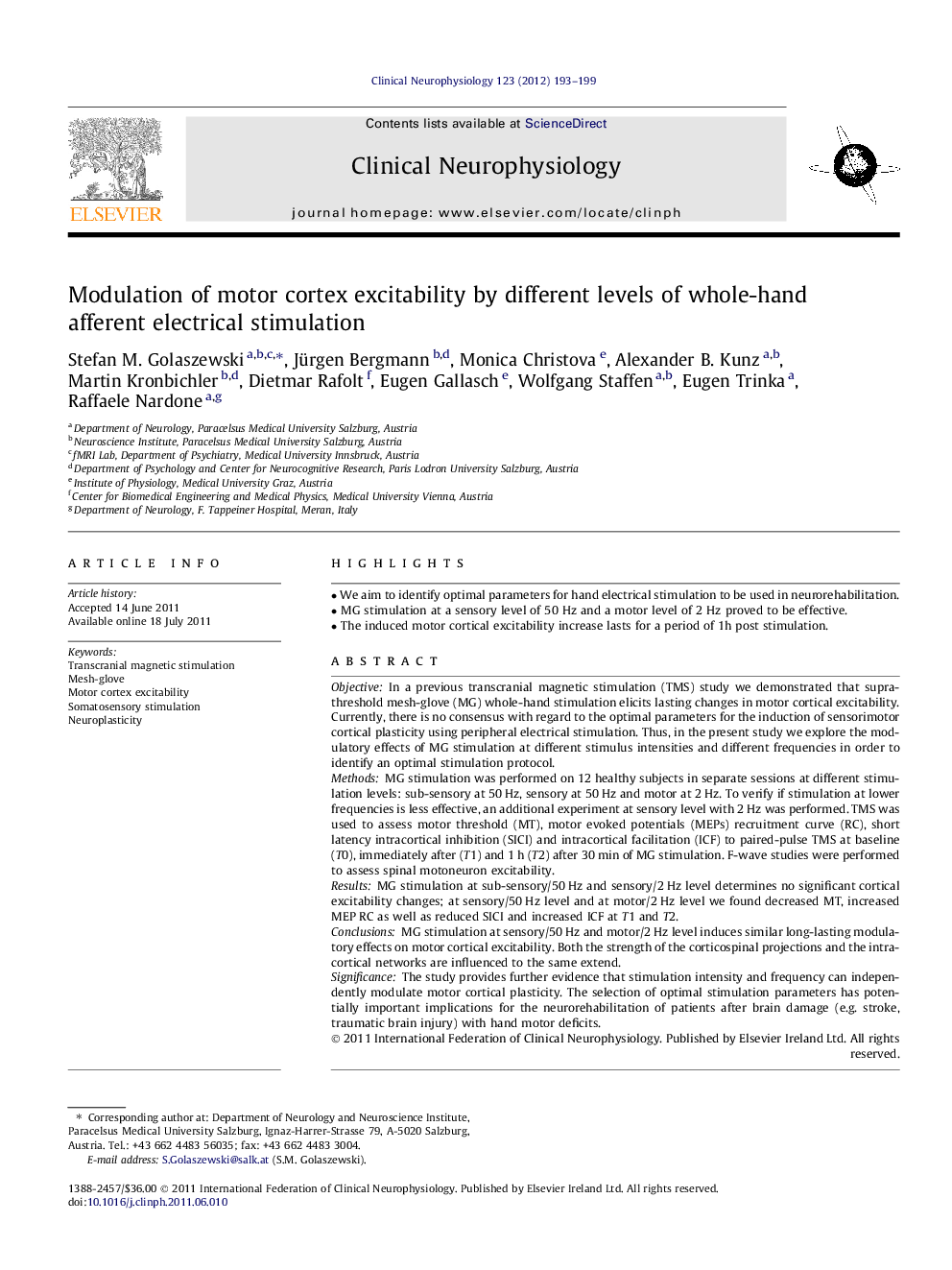| Article ID | Journal | Published Year | Pages | File Type |
|---|---|---|---|---|
| 3043847 | Clinical Neurophysiology | 2012 | 7 Pages |
ObjectiveIn a previous transcranial magnetic stimulation (TMS) study we demonstrated that suprathreshold mesh-glove (MG) whole-hand stimulation elicits lasting changes in motor cortical excitability. Currently, there is no consensus with regard to the optimal parameters for the induction of sensorimotor cortical plasticity using peripheral electrical stimulation. Thus, in the present study we explore the modulatory effects of MG stimulation at different stimulus intensities and different frequencies in order to identify an optimal stimulation protocol.MethodsMG stimulation was performed on 12 healthy subjects in separate sessions at different stimulation levels: sub-sensory at 50 Hz, sensory at 50 Hz and motor at 2 Hz. To verify if stimulation at lower frequencies is less effective, an additional experiment at sensory level with 2 Hz was performed. TMS was used to assess motor threshold (MT), motor evoked potentials (MEPs) recruitment curve (RC), short latency intracortical inhibition (SICI) and intracortical facilitation (ICF) to paired-pulse TMS at baseline (T0), immediately after (T1) and 1 h (T2) after 30 min of MG stimulation. F-wave studies were performed to assess spinal motoneuron excitability.ResultsMG stimulation at sub-sensory/50 Hz and sensory/2 Hz level determines no significant cortical excitability changes; at sensory/50 Hz level and at motor/2 Hz level we found decreased MT, increased MEP RC as well as reduced SICI and increased ICF at T1 and T2.ConclusionsMG stimulation at sensory/50 Hz and motor/2 Hz level induces similar long-lasting modulatory effects on motor cortical excitability. Both the strength of the corticospinal projections and the intracortical networks are influenced to the same extend.SignificanceThe study provides further evidence that stimulation intensity and frequency can independently modulate motor cortical plasticity. The selection of optimal stimulation parameters has potentially important implications for the neurorehabilitation of patients after brain damage (e.g. stroke, traumatic brain injury) with hand motor deficits.
► We aim to identify optimal parameters for hand electrical stimulation to be used in neurorehabilitation. ► MG stimulation at a sensory level of 50 Hz and a motor level of 2 Hz proved to be effective. ► The induced motor cortical excitability increase lasts for a period of 1h post stimulation.
